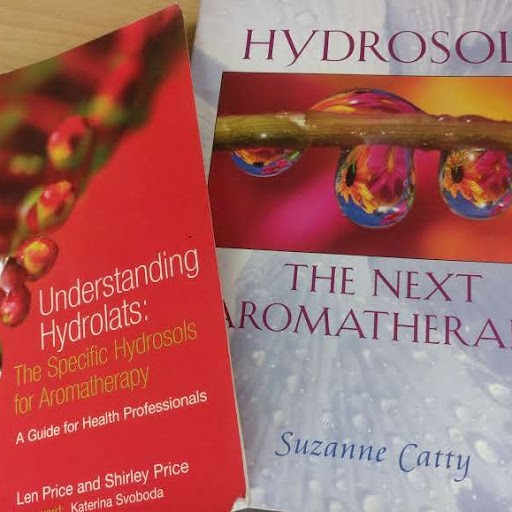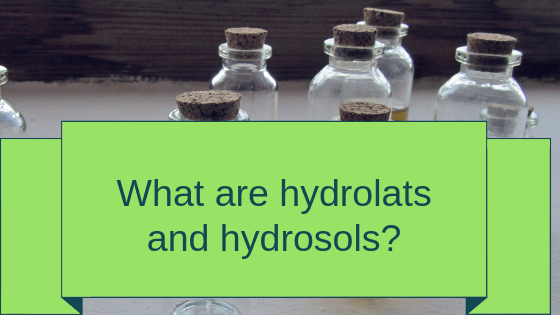What are hydrolats and hydrosols?
In America they are called hydrosols, while in the UK they tend to be called hydrolats or hydrosols depending on the supplier. They are both used to refer to the same product.
During steam distillation, the plant material is placed in a container and steam is passed through the plant materials to draw out the chemical compounds. The steam is then cooled and the water and plant material molecules collect in a large vat. The large vat holds the essential oil at the top, as it is lighter and floats on the water. This is scraped off and placed into the bottles we are accustomed to seeing.
The bottom part consists of the cooled water and denser molecules, which are light enough to pass through the distillation process. It is this section which  becomes called hydrosols/hydrolats. They have a different chemical composition to essential oils and are much more gentler in their action, so are suitable for use with babies and the elderly.
becomes called hydrosols/hydrolats. They have a different chemical composition to essential oils and are much more gentler in their action, so are suitable for use with babies and the elderly.
Why don’t we see them in shops?
Hydrolats and hydrosols are usually bought from specialist aromatherapy suppliers. They have a shorter shelf life than essential oils, because they don’t have preservatives in them. Some may have alcohol added as a preservative, so it important to know your supplier as this is not ideal for vulnerable children or adults and depending on how you plan to use them. These products also don’t like the heat or fluctuating temperatures so it can make storage more difficult.
Why use them?
Hydrolats and hydrosols are a great choice when you want to use them with babies or the elderly and you are worried about dosage levels. They work in a homeopathic way, where less can be more. If you add them to water they react with the water chemicals and create an effective product.
Personally, I have a few favourites and Roman chamomile was one I kept in the house when my children were younger. I’ve personally used Roman Chamomile hydrolat to help with my son’s eye when it appeared to have an infection, it became part of a mix with zinc oxide to use as an effective nappy cream, I used it with st johns wort for teething pains, and I used the spray to help reduce itching when they both had chicken pox, along with adding it to an aloe vera gel.
My other go to hydrolat tends to be thyme. When younger, my children tended to be susceptible to stomach bugs, so I would use it to help reduce the risk of infecting our whole household. I’ve also effectively used thyme hydrolat as a spray with clients who have ulcers which need to be cleaned regularly, and I have also effectively used sage to help with hormone issues.
How do I use them?
Personally, I think hydrolats are a great way of providing a gentle aromatherapy approach in a safe manner. Due to the safety concerns around them I do only use one supplier, and I would recommend checking the supplier you intend to use to make sure preservatives haven’t been added.
 If you want to learn more about how to use the hydrolats, you may want to consider buying Suzanne Catty ‘Hydrosols’ or ‘Understanding Hydrolats’ by Price & Price.
If you want to learn more about how to use the hydrolats, you may want to consider buying Suzanne Catty ‘Hydrosols’ or ‘Understanding Hydrolats’ by Price & Price.
 Louise is an holistic therapist who owns Therapy Centre, Bristol BS14 9HB, a clinic offering a range of holistic and beauty therapies. Louise offers reflexology, aromatherapy, holistic massage, Indian head massage, reiki, baby massage and story massage. She is a mum of two boys and when she is not working she enjoys getting outdoors with her family. For further information about Louise, visit louise-morgan.co.uk.
Louise is an holistic therapist who owns Therapy Centre, Bristol BS14 9HB, a clinic offering a range of holistic and beauty therapies. Louise offers reflexology, aromatherapy, holistic massage, Indian head massage, reiki, baby massage and story massage. She is a mum of two boys and when she is not working she enjoys getting outdoors with her family. For further information about Louise, visit louise-morgan.co.uk.

